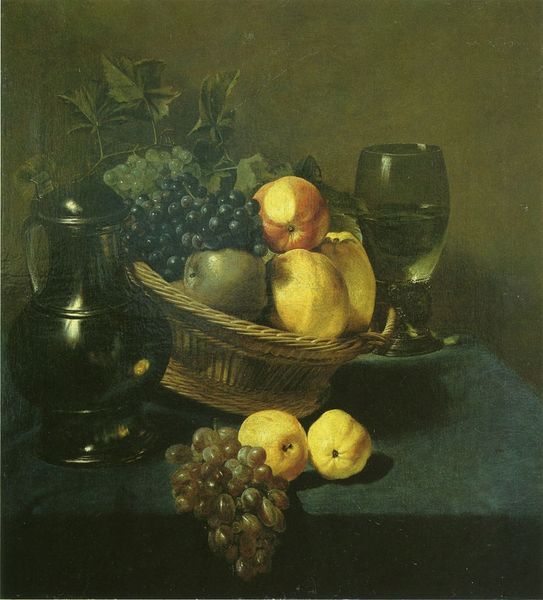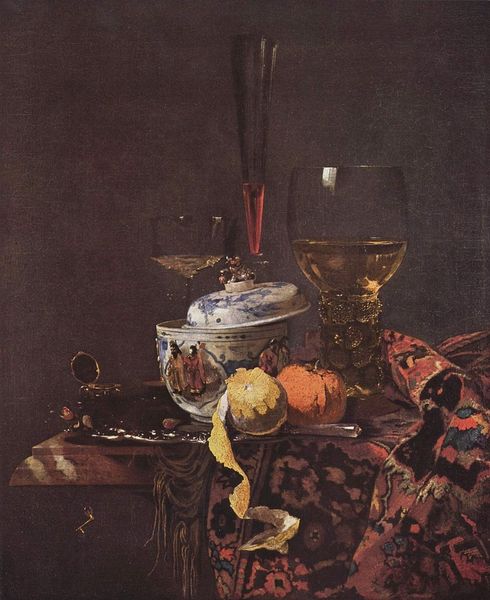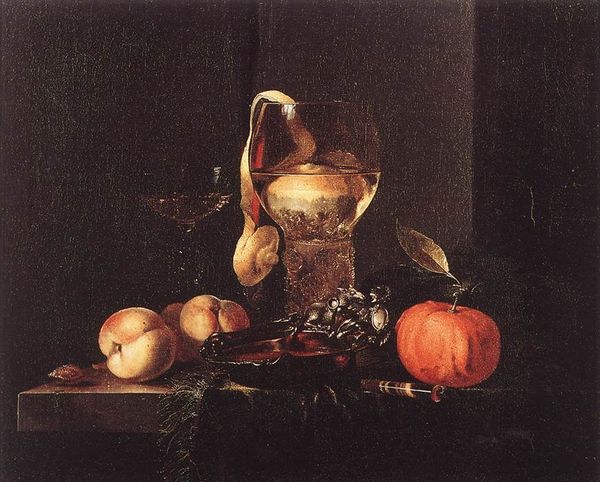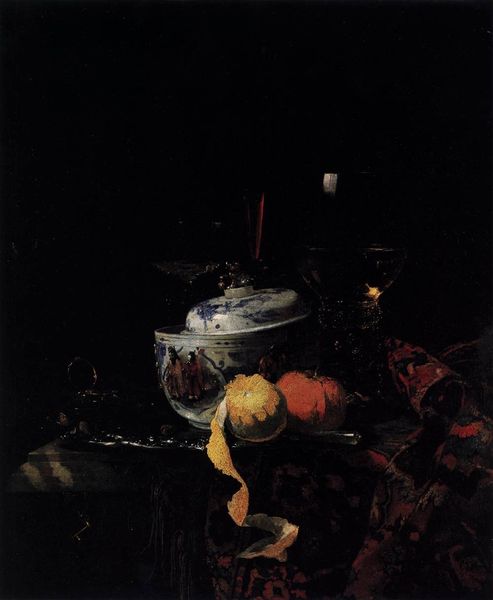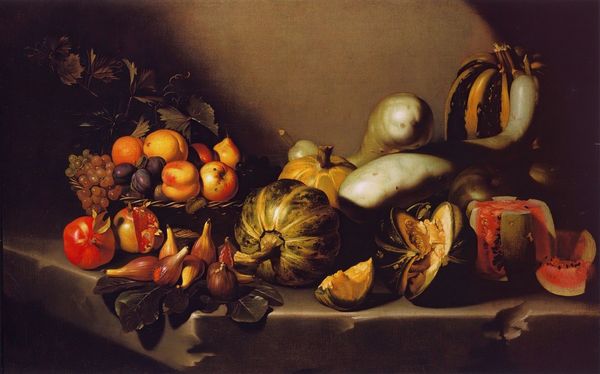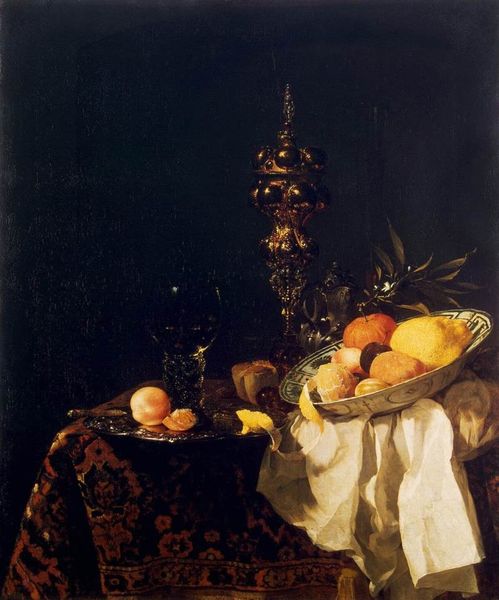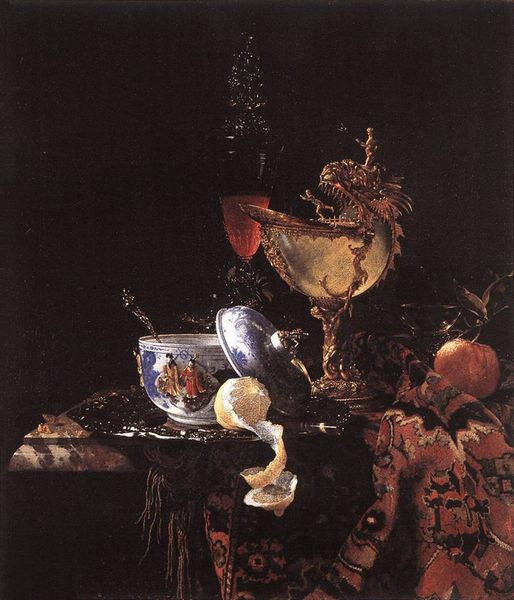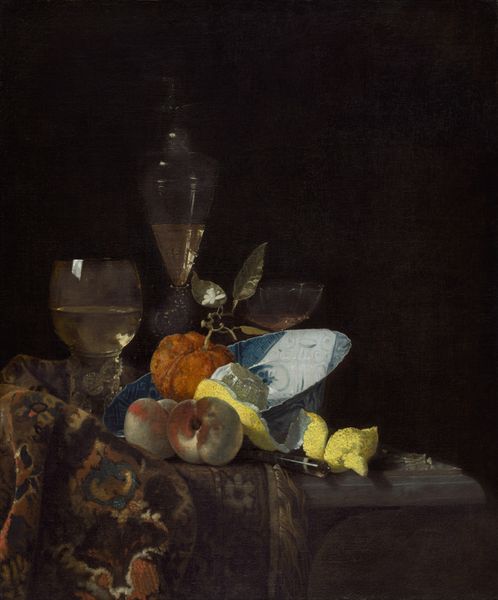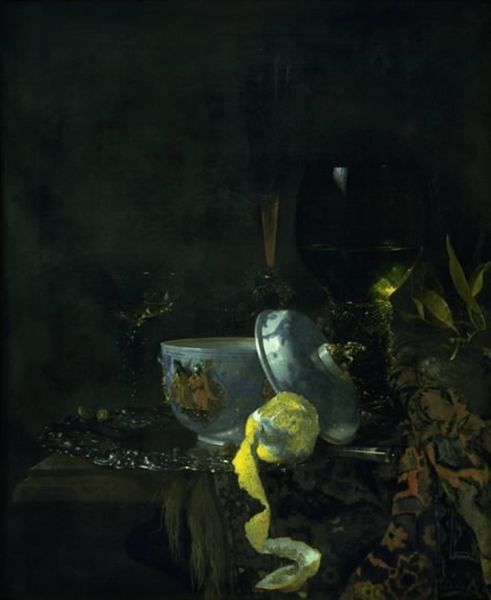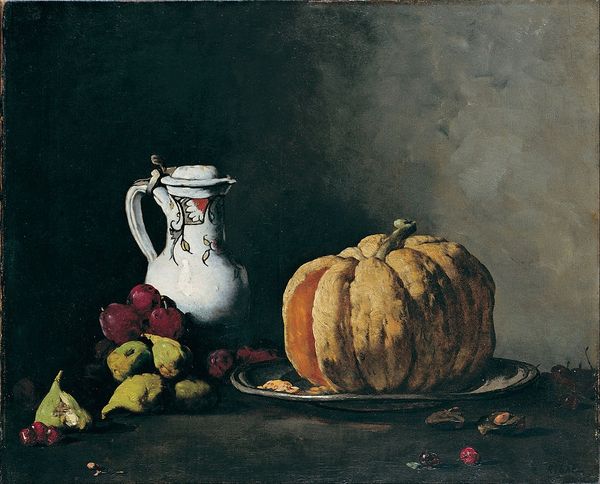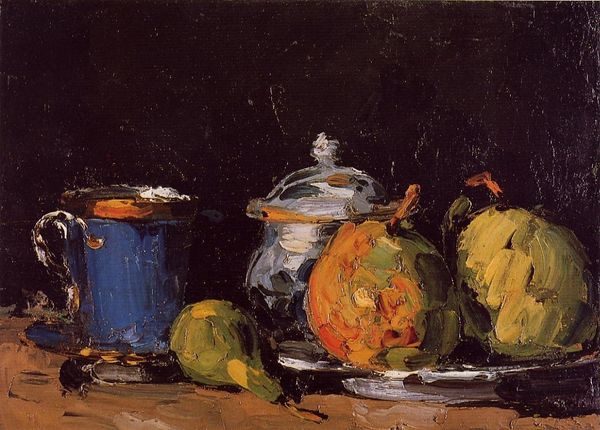
oil-paint, photography
#
baroque
#
dutch-golden-age
#
oil-paint
#
photography
#
realism
Copyright: Public domain
Curator: Immediately, I get a sense of contained opulence, a darkness holding precious light. Editor: Exactly. This painting, known as "Still-Life," was created around 1665 by Willem Kalf, a master of Dutch Golden Age painting. Notice how he uses oil paint to capture the textures of everyday luxury items. Curator: Luxury feels like an understatement! That gleaming silver pitcher steals the show. It's almost luminescent against the near-black backdrop. But what's in that bowl? It looks…confited. Editor: Yes! The fruit and imported porcelain suggest prosperity, a subtle nod to Dutch mercantile power. The composition showcases realism through light and shadow to provide detail. Kalf emphasizes a sensory feast. The work also embodies Dutch baroque, which used elaborate styles to symbolize authority and elegance during that era. Curator: So, the visual language here tells a tale of trade, taste, and a certain amount of…conspicuous consumption, shall we say? Makes me wonder who this appealed to. Was it for the merchant class, a visual status symbol? Editor: Precisely! Paintings such as these decorated the homes of the rising merchant class. They served as emblems of wealth, intellectual prowess, and global reach, subtly broadcasting social and cultural capital. Kalf understood his market well. Curator: Fascinating. To think such meticulously rendered light could carry so much social weight! I now appreciate the depth and sophistication it contains. Editor: And to me, this art provides insights into human creativity and aspiration, but it feels confined and detached somehow. I see something appealing, but, more clearly now, a world that I do not share.
Comments
No comments
Be the first to comment and join the conversation on the ultimate creative platform.

